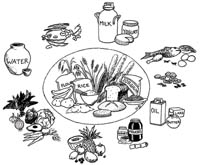Use 'Print preview' to check the number of pages and printer settings.
Print functionality varies between browsers.
Printable page generated Saturday, 29 November 2025, 4:20 AM
Antenatal Care Module: 14. Health Promotion Issues During Pregnancy
Study Session 14 Health Promotion Issues During Pregnancy
Introduction
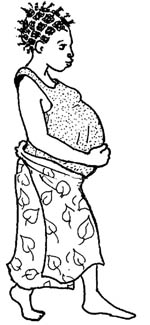
Health promotion refers to any activity that aims to achieve better health in a community or a country. It includes the health education of individuals to enable them to control and change their lifestyles so that their health is improved. This is the main focus of this study session, in the context of your role as a health educator of pregnant women during antenatal care visits. But as you know from Study Session 2 of this Module, health promotion activities go far beyond this focus on individual behaviour, and include a wide range of social and environmental interventions that increase health and wellbeing in populations as well as individuals. Health promotion also includes disease prevention — actions taken to prevent a disease from developing, and health screening — the routine testing of individuals to see if they are at risk of developing a health problem. The relationship between health promotion, health education, disease prevention and health screening is represented in Figure 2.1 in Study Session 2.
Antenatal care (FANC, Study Session 13) provides a key entry point for a broad range of health promotion and disease prevention services. It is essential for healthcare providers and women to talk about important issues affecting the woman’s health and her pregnancy.
During the antenatal period, you can promote the health of the women in your care and the health of their babies before and after birth, by educating mothers about the benefits of good nutrition, adequate rest, good hygiene, family planning and exclusive breastfeeding, and immunization and other disease prevention measures. Your aim is to develop women’s knowledge of these issues so they can make better informed decisions affecting their pregnancy outcome — but you should never lose sight of the difficulties some women will face in being able to improve their lifestyles.
Learning Outcomes for Study Session 14
When you have studied this session you should be able to:
14.1 Define and use correctly all of the key words printed in bold. (SAQs 14.2 and 14.4)
14.2 Describe the major dietary constituents for good health in a pregnant woman, advise women on eating well with little money, and explain the problems resulting from a poor diet. (SAQs 14.1 and 14.2)
14.3 Explain the benefits of good hygiene and other self-care activities in pregnancy. (SAQ 14.3)
14.4 Explain the benefits of immunization against tetanus. (SAQs 14.3)
14.5 Explain the benefits of early and exclusive breastfeeding for the mother and for her baby. (SAQs 14.3 and 14.4)
14.6 Explain the benefits of family planning to achieve birth spacing and discuss postpartum contraception with pregnant women. (SAQ 14.4)
14.1 Nutrition during pregnancy
In this section (the biggest in this study session) we describe the nutritional requirements in pregnancy in detail and explain how you can advise women about eating well, even if they have very little money for additional food.
14.1.1 Eating well
Eating well means eating a variety of healthy foods and also eating enough food. This combination helps a pregnant woman and her baby stay healthy and strong because it:
- Helps a woman resist illness during her pregnancy and after the birth
- Keeps a woman’s teeth and bones strong
- Gives a woman strength to work
- Helps the baby grow well in the mother’s uterus
- Helps a mother recover her strength quickly after the birth
- Supports the production of plenty of good quality breast milk to nourish the baby.
Eating a variety of foods
It is important for pregnant women (like everyone else) to eat different kinds of food (see Figure 14.1): main foods (carbohydrates), grow foods (proteins), glow foods (vitamins and minerals), and go foods (fats, oils and sugar), along with plenty of fluids. We will describe each of these food groups in more detail later in the study session.
Eat more food
Pregnant women and women who are breastfeeding need to eat more than usual. The extra food gives them enough energy and strength, and helps their babies grow. They need to increase their usual food intake by at least 200 calories per day, or even more than this if they were underweight before they became pregnant. There are many ways to increase daily food intake by this amount: for example, one more serving of maize porridge and 12 groundnuts a day would meet this additional requirement.
Some pregnant women feel nauseated and do not want to eat. But pregnant women need to eat enough — even when they do not feel well. Simple foods like injera or rice can be easier for these women to eat. For women who suffer from nausea, encourage small and frequent meals.
Problems from poor nutrition
Poor nutrition can cause tiredness, weakness, difficulty in fighting infections and other serious health problems. Poor nutrition during pregnancy is especially dangerous. It can cause miscarriage or cause a baby to be born very small or with birth defects. It also increases the chances of a baby or a mother dying during or after the birth.
14.1.2 Talking to women about food
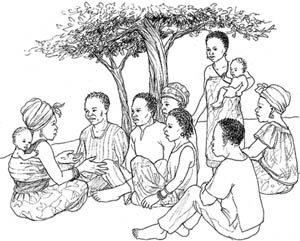
When you see pregnant women for antenatal care, or at village meetings and celebrations, in the market, try to find ways to enquire sensitively about the food they eat. The earlier pregnant women start eating healthier foods, the better chance they have to stay healthy, to have normal births and to have healthy babies.
To find out whether a woman is eating well, ask her what she usually eats, and how much. For example, ask her: ‘What did you eat yesterday?’ Be sure to tell her what is healthy about what she eats, reinforce the positive efforts she is making to eat well. Then, if it is appropriate, make a suggestion for how she could eat better.
Remember that education about food is not enough on its own to change eating behaviour. Even if a woman knows the best foods for health, she may not eat them. Many families cannot afford to buy enough food or a wide variety of foods. Some women may simply not like the taste of some healthy foods. To help a woman eat better, suggest healthy foods that she can afford and will choose to eat.
14.1.3 Eating well with little money
The biggest cause of poor nutrition is poverty. A very poor family can eat better by spending money wisely and not wasting what little they have. A father who buys alcohol, tobacco and ‘chat’ (or khat) could instead buy nutritious food or he could buy a hen to lay eggs. A mother who buys her children sweets or soda pop could instead buy eggs, beans or other low-cost, healthful foods. Here are some ideas that families can use to eat better with little money.
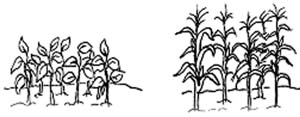
Beans, peas and lentils
Beans, peas and lentils belong to a family of vegetables called legumes. All legumes have a lot of protein and vitamins, and they usually do not cost much. They have even more vitamins if they are sprouted before being eaten. Planting legumes makes soil richer. Other crops such as maize will grow better in a field where legumes once grew (Figure 14.2).
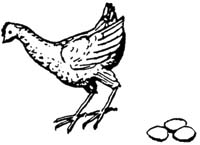
Less expensive meats and animal products
Blood and organ meats like liver, heart and kidney have a lot of iron and may cost less than other meats. Fish and chicken are as healthy as other meats, and usually cost less — especially for a family that fishes or raises their own chickens. Eggs have a lot of protein, iron, and vitamin A. Eggs give more protein for less money than almost any other food.
Whole grains
Grains like teff, wheat, rice and corn are more nutritious when they have not been refined (processed to take out the colour). Taking out the colour takes out healthy things too. White bread and white rice have fewer vitamins, minerals and proteins than brown bread or brown rice. Dark teff and brown injera are more nutritious than the light-coloured ones.
Vegetables and fruits
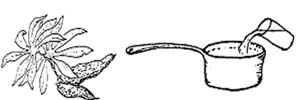
When vegetables are boiled or steamed, some of the vitamins from the foods go into the cooking water. Use this water to make soups.
The outside leaves of plants are usually thrown away, but sometimes they can be eaten. The leaves of the cassava plant have more vitamins and protein than the root. Many wild fruits and berries are rich in vitamins and natural sugars that give energy.
Breast milk
Breast milk costs nothing, and has all the nutrition a baby or young child needs. Young children who are on exclusive breastfeeding do not need fortified milks or other foods until after the age of 6 months.
14.2 Food groups and their nutrients
Main foods (carbohydrates)
In most parts of the world, people eat one main food at each meal. This main food may be injera, rice, maize, wheat, millet, cassava, plantain, kocho, bulla, godere, shenkora, gishta, breadfruit or another low-cost, starchy food which is rich in carbohydrates. These foods give the body energy. But to grow and stay healthy, the body needs other types of food too.
Grow foods (proteins)
Meat, fish and cheese are nutritious foods but they can carry parasites or disease when they are eaten raw. Pregnant women should eat fish, meat or cheese only when it is well cooked or pasteurised.
Grow foods contain protein, which is needed for the growth of muscles, bones, and strong blood. Everyone needs protein to be healthy and to grow. Some grow foods that are high in proteins are:
- Legumes (beans, peas, soybeans, and lentils)
- Eggs
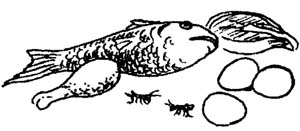
- Cheese, milk and yogurt
- Nuts and seeds
- Cereal, wheat, corn and rice
- Meat, poultry and fish.
Go foods (sugars and fats)
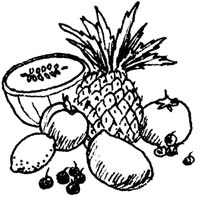
Go foods contain sugars and fats, which give the body energy. Everyone needs these foods to be healthy. Some healthy go foods that are high in sugars are:
- Fruits
- Honey.
Some ‘go foods’ that are high in fats are:
- Some nuts (e.g. peanuts) and some seeds (e.g. sunflower)
- Avocados
- Vegetable oils, butter and lard
- Fatty meat
- Milk and cheese
- Eggs
- Fish.
These days, many people eat more sugars and fats than they need. That is because more people drink sugary soda pop, or eat foods that come from packages instead of foods made at home. These packaged, sugary and fatty foods are expensive and not as healthy as fresh products. They also damage the teeth. It is better to eat go foods that are natural, not packaged.
Glow foods (vitamins and minerals)
Glow foods contain vitamins and minerals, which help the body fight infection and keep the eyes, skin and bones healthy and strong. Vitamins and minerals are known as micronutrients because they are very small. Fruits and vegetables are high in vitamins and minerals. It is important for pregnant women to eat as many different fruits and vegetables as they can. In the next section, we discuss the five most important vitamins and minerals that pregnant and breastfeeding women should eat every day.
14.2.1 The five most important vitamins and minerals
Pregnant and breastfeeding women need more of these five vitamins and minerals than other people do — iron, folic acid, calcium, iodine and vitamin A. They should try to get these vitamins and minerals every day.
Why do you think that a pregnant woman needs more of these vitamins and minerals?
The baby needs them to grow and be healthy and to prevent birth defects. A pregnant woman needs them to have enough energy to look after herself and her family, to fight infections and to keep her strong for completing the pregnancy, giving birth safely and breastfeeding the baby afterwards.
Iron
Iron helps make blood healthy and prevents anaemia (you will learn about diagnosing and treating anaemia in Study Session 18 of this Module). A pregnant woman needs a lot of iron to have enough energy, to prevent too much bleeding at the birth, and to make sure that the growing baby can form healthy blood and store iron for the first few months after birth. It is also important in the production of good breast milk.

These foods contain a lot of iron (Figure 14.3):
- Poultry (chicken)
- Fish
- Sunflower, pumpkin and squash seeds
- Beans, peas and lentils
- Dark leafy green vegetables
- Yams
- Hard squash
- Meat (especially liver, kidney and other organ meats)
- Whole grain products
- Dried fruit
- Nuts
- Iron-fortified bread
- Egg yolk.
Taking iron pills
It can be difficult for a pregnant woman to get enough iron, even if she eats iron-rich foods every day. She should also take iron pills (or liquid iron drops) to prevent anaemia. These medicines may be called ferrous sulfate, ferrous gluconate, ferrous fumerate or other names (ferrous comes from the Latin word for iron).
Iron pills or drops can be obtained from pharmacies and health institutions, but throughout Ethiopia you will give iron pills routinely to pregnant women as part of focused antenatal care. She should receive 300 to 325 mg (milligrams) of ferrous sulphate once a day taken by mouth, preferably with a meal. This dosage is usually supplied in a single tablet combined with folate (see below).
The iron pills may cause nausea, make it hard for the woman to pass stool (constipation), and her stool may turn black, but it is important for the woman to keep taking the iron pills because anaemia can cause complications during pregnancy, during delivery, and after the baby is born. It is helpful for the woman to take the iron pill with a meal, drink plenty of fluids, and eat plenty of fruits and vegetables to avoid nausea and constipation. The black colour of the stool is a normal side-effect from the iron and is not harmful.
Folate (folic acid)
Lack of folate can cause anaemia in the mother and severe birth defects in the baby. To prevent these problems, it is important if possible for a woman to get enough folic acid in her diet before she becomes pregnant and she should certainly do this in the first few months of pregnancy.
Foods rich in folate that pregnant and breastfeeding women should try to eat every day (Figure 14.4) include:
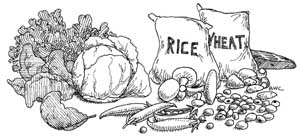
- Dark green, leafy vegetables
- Whole grains (brown rice, whole wheat)
- Meat (especially liver, kidney and other organ meats)
- Fish
- Peas and beans
- Eggs
- Sunflower, pumpkin and squash seeds
- Mushrooms.
As well as eating as many of these foods as she can, all pregnant women should also take 400 mcg (micrograms) of folic acid tablets orally every day during pregnancy. She should be able to get these tablets from you as part of Focused Antenatal Care.
Calcium
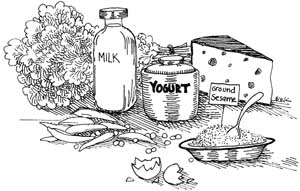
A growing baby needs a lot of calcium to make new bones, especially in the last few months of pregnancy. Women need calcium for strong bones and teeth. These foods (Figure 14.5) contain a lot of calcium:
- Yellow vegetables (hard squash, yams)
- Lime (carbon ash)
- Milk, curd, yogurt and cheese
- Green, leafy vegetables
- Bone meal and egg shells
- Molasses and soybeans
- Sardines.
Women can also get more calcium in these ways:
- Soak bones or eggshells in vinegar or lemon juice for a few hours. Then use the liquid to make soup or eat with other foods.
- Add lemon juice, vinegar or tomatoes when cooking bones.
- Grind eggshells into a fine powder and mix into food.
- Soak maize in lime (carbon ash) before cooking it.
Iodine
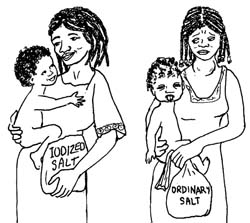
Iodine prevents goitre (swelling of the neck) and other problems in adults. Lack of iodine in a pregnant woman can cause her child to have cretinism, a disability that affects thinking and physical features.
The easiest way to get enough iodine is to use iodized salt instead of regular salt (Figure 14.6). It is available in packet form labelled ‘Iodized salt’ in many market places.
Vitamin A

Vitamin A prevents poor vision at night or when light intensity is low and helps to fight infections. Lack of vitamin A also causes blindness in children. A woman needs to eat plenty of vitamin A-rich food during pregnancy and while breastfeeding.
Dark yellow and green leafy vegetables and yellow fruits contain lots of vitamin A. Name some of these vegetables and fruits.
Carrots, mangoes, spinach, cabbage. (You may have suggested other good examples.)
Other sources of vitamin A are liver, fish liver oil, milk, eggs and butter.
Fluids
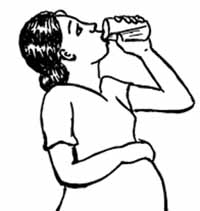
Along with eating healthy foods, women should drink plenty of clean water and other healthy fluids every day. Fruit juices, animal milks and many herbal teas are all healthy fluids to drink.
14.3 Hygiene during pregnancy

During pregnancy, women should be especially careful about personal hygiene. Pregnant women sweat more and have more vaginal discharge than non-pregnant women (due to hormonal changes), and they may be more vulnerable to infection by germs in the environment. Keeping the body clean helps prevent infection. Hand washing with soap is the most important hygiene action she can take, especially before preparing food and after going to the toilet. If possible, a pregnant woman should wash her body every day with clean water — especially her genital area.
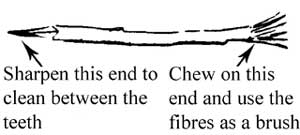
Dental hygiene is especially important during pregnancy because increased oestrogen levels can cause swelling and increased sensitivity in gum tissues. Whether she cleans her teeth with a dental stick or a toothbrush and toothpaste, the pregnant woman should do so regularly.
14.4 Living a healthy lifestyle
As well as eating well and keeping clean, pregnant women need to get enough sleep and rest every day. This will help her to avoid developing high blood pressure (discussed in detail in Study Session 19 later in this Module), and oedema (swelling of the feet and ankles due to fluid collecting in the tissues). Good rest also helps her to stay strong and gives the fetus a better chance of being born healthy.
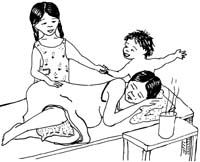
Many women have to work throughout their pregnancy in the fileds, factories or shops, as well as in their own homes. This can be especially hard for women during pregnancy, because they get more tired than usual — especially in the last few weeks. Explain to them and their families that the woman should try to rest for a few minutes every 1 to 2 hours (Figure 14.7). This will also help her to enjoy her pregnancy.

Make sure that women know that whatever they put into their body will pass across the placenta and into the baby (Figure 14.8). Cigarette smoke, alcohol and illegal drugs such as opium, heroin, cocaine and barbiturates are dangerous for anyone, but especially harmful to the developing fetus. Even one or two alcoholic drinks a day during pregnancy can result in the baby being born too small, or with birth defects or disabilities that affect the brain.
She should also be advised to avoid:
- Lifting heavy things
- People who are sick, especially if they have vomiting, diarrhoea or rashes
- Strong chemicals or their fumes (e.g. chemicals used to kill pests in the fields)
- Non-essential medicines
- Medicines such as cough syrups, laxatives and pain relievers that have not been prescribed for her by a health worker (Figure 14.9).
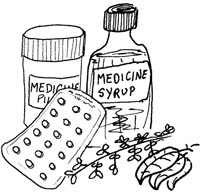
14.5 Immunization against tetanus
Tetanus is a very serious, life-threatening infection, which damages the nervous system and is caused by bacteria in the environment, for example in soil. Tetanus toxoid immunization is the best protection against tetanus for the woman and her baby. Therefore, it is very important for her to be immunized according to the schedule on her card, and to bring her card to every antenatal care visit (Figure 14.10).

In the Module on Postnatal Care, you will learn that to prevent tetanus in the newborn, the stump of the baby’s umbilical cord should be kept clean and dry after birth and until it falls off. This is one reason why it is so important for the woman and her family to plan and prepare for a clean and safe childbirth attended by a skilled health provider such as you.
14.6 Benefits of early and exclusive breastfeeding
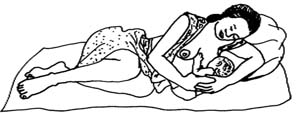
Breastfeeding positions and good attachment of the baby are described in detail in the Postnatal Care Module, but you should lay the foundations during your antenatal care visits with pregnant women — especially those having their first baby. Whether the mother chooses to breastfeed her baby or she feeds a substitute for human milk, you should respect her decision. But she cannot make this choice if she has not been well informed by you about the benefits of early and exclusive breastfeeding. Explain to her that it:
- Provides the best nutrition for the newborn
- Is easily digested and efficiently used by the baby’s body
- Protects against infection and other illnesses
- Offers some protection against allergies
- Is cost-effective and affordable
- Promotes mother-baby bonding
- Provides the woman with a degree of contraceptive protection (though less than 100% effective) if she is exclusively breastfeeding until her first menstrual period returns after the birth.
14.6.1 Unhealthy beliefs and practices about feeding newborns
In some countries, there are beliefs about feeding newborn babies that are dangerous to the baby’s health. For example, in some places the baby is given food or liquids, such as water with sugar, honey, herbs, spices and animal milks, during the first 3 days after the birth before the woman begins breastfeeding. The thin, watery fluid called colostrum that her breasts produce during these 3 days may be thrown away because it is considered unclean.
What are the benefits of feeding colostrum to newborns? (You learned about this in Study Session 7 of this Module.)
Colostrum is rich in proteins and antibodies (special proteins produced by the mother’s immune system that help to protect her and the baby from infection).
Even after the woman’s breastmilk begins to flow, some people go on feeding other liquids and honey to the baby, in addition to breastfeeding.
What do you think are the reasons for this and what are the risks in doing so?
Breastfed babies may demand feeding frequently, so the mother may think that her breastmilk is not enough on its own. Feeding other liquids and honey to the baby is not necessary for nutrition and it increases the risk of infection from the spoon or feeding bottle.
14.6.2 General principles of early and exclusive breastfeeding
For mothers who are HIV-negative:
- Babies should begin breastfeeding as soon as possible after birth (preferably within the first hour) and continue for at least the first 6 months of life.
- Colostrum, the first milk should be given to the baby, not thrown away.
- The baby should be breastfeed exclusively for the first 6 months of life. Nothing else should be given to the baby to drink or eat during that time.
- The baby should be breastfeed whenever s/he wants, day and night (on demand), which stimulates the breasts to produce an adequate supply of breast milk.
You will learn how to advise mothers who are HIV-positive in Study Session 16 of this Module, on prevention of mother to child transmission (PMTCT).
14.7 Postpartum family planning
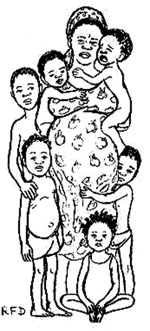
During the antenatal period, discussions should begin concerning postpartum contraception options. Family planning information and services are important components of good quality antenatal care. These occasions provide an opportunity for health providers to discuss with women the benefits of birth spacing (leaving at least 2 years between births) for their health and the health of their current and future children. Help pregnant women and new mothers decide how they will avoid pregnancy after childbirth.
14.7.1 Breastfeeding and contraception
The return of fertility after birth is not entirely predictable, and conception can occur before the woman resumes her first menstrual period. A woman who is not fully and exclusively breastfeeding is able to become pregnant again as soon as 4 to 6 weeks after childbirth, and she should plan to begin some sort of contraception before starting to have sexual intercourse again. Full and exclusive breastfeeding gives good protection against conception, but cannot be relied on as 100% effective. A breastfeeding woman is usually protected from pregnancy only if:
- She is no more than 6 months postpartum
- She is breastfeeding exclusively (8 or more times a day, including at least once at night; no daytime feedings more than 4 hours apart and no night feedings more than 6 hours apart; no complementary foods or fluids given to the baby)
- Her menstrual cycle has not returned.
Numerous safe methods of contraception are available for the breastfeeding woman.
14.7.2 Benefits of birth spacing
For maximum protection, women after childbirth should not wait until the return of monthly bleeding to start a contraceptive method, but start as soon as safe guidance for her chosen method allows. (Some basic principles of contraception after miscarriage or induced abortion are given in Study Session 20 of this Module. Detailed discussion of all contraceptive methods and guidelines are given in the Family Planning Module in this curriculum.)
Intervals of at least 2 years have health benefits for both the woman and baby (Box 14.1).
Box 14.1 Appropriate birth spacing lowers the risk of:
- Maternal mortality
- Fetal death (miscarriage or stillbirth), neonatal mortality
- Anaemia in the mother during subsequent pregnancies
- Postpartum inflammation of the endometrium lining the uterus
- Premature rupture of the amniotic membranes surrounding the fetus
- Premature birth
- Intrauterine growth retardation and a low birth-weight baby
- Malnutrition of newborns and infants due to insufficient breastmilk.
Coordinate your family planning visits with an infant’s immunization schedule. And remember that optimal breastfeeding offers triple value: important improvements in child survival and health, better health for mothers, and temporary contraception.
In the next study session, you will learn about the principles of effective counselling, so you can communicate the health promotion messages to pregnant women sensitively during antenatal care, and address their concerns and beliefs about pregnancy and childbirth.
Summary of Study Session 14
In Study Session 14 you learned that:
- Eating well during pregnancy and breastfeeding means eating a variety of foods and enough foods — at least 200 additional calories every day.
- Eating well with little money is possible by buying cheap nutritious foods like beans and organ meats, growing legumes, keeping chickens, using whole grains, and making soups.
- Pregnant and breastfeeding women need to eat a variety of main foods (carbohydrates), grow foods (proteins), go foods (sugars and fats), and glow foods (vitamins and minerals, particularly iron, folate, calcium, iodine and Vitamin A).
- Iron pills and folate (folic acid) tablets should be provided to pregnant women as part of routine antenatal care.
- Personal hygiene, especially hand washing and keeping the genital area clean, helps to prevent infection during pregnancy (and at all times).
- Getting plenty of rest and sleep, and avoiding alcohol, cigarettes, illegal drugs, strong chemicals and infectious persons helps to protect the pregnant woman and her unborn baby.
- Immunization against tetanus should be a routine part of antenatal care.
- Feeding colostrum, followed by full and exclusive breastfeeding, is the best and only nourishment a baby needs in the first 6 months of life.
- Full and exclusive breastfeeding may protect the woman from becoming pregnant again up to 6 months after the birth, but only if feeding is very frequent and her menstrual periods have not returned.
- Birth spacing of at least 2 years is good for the health of the woman, her baby and any older children — in fact for all her family.
Self-Assessment Questions (SAQs) for Study Session 14
Now that you have completed this study session, you can assess how well you have achieved its Learning Outcomes by answering the following questions. Write your answers in your Study Diary and discuss them with your Tutor at the next Study Support Meeting. You can check your answers with the Notes on the Self-Assessment Questions at the end of this Module.
SAQ 14.1 (tests Learning Outcomes 14.2)
Suggest some ways to help women who cannot afford to buy a lot of different foods how they can get enough calories and a variety of foods.
Answer
Beans, peas and lentils are cheap and nourishing and quite easy to grow. Organ meats like liver, heart and kidney have a lot of iron and may cost less than other meats. Brown bread or brown rice and dark teff are more nutritious than the light-coloured grains and are usually cheaper to buy if she cannot grow her own.
SAQ 14.2 (tests Learning Outcomes 14.1 and 14.2)
Complete Table 14.1. Some of the categories have been left blank for you to write your answers.
| Food group | Contains | Three examples |
|---|---|---|
| Main foods | Carbohydrates |
|
| Proteins |
|
| Go foods |
|
|
| Vitamins and minerals |
|
Answer
The table below is the completed version of Table 14.1. We do not know exactly which three examples you chose for each food group, so you may have mentioned other good examples.
| Food group | Contains | Three examples |
|---|---|---|
| Main foods | Carbohydrates | Injera, rice, maize, etc. |
| Grow foods | Proteins | Beans, eggs, meat, etc. |
| Go foods | Sugars and fats | Fruits, honey, nuts, etc. |
| Glow foods | Vitamins and minerals | Fish, dark green leafy vegetables, meat, etc. |
SAQ 14.3 (tests Learning Outcomes 14.3, 14.4 and 14.5)
What advice should you give a pregnant woman on how to avoid infection in herself or her newborn baby? Think of at least three different actions she can take.
Answer
Some actions that you can advise a pregnant woman to take to avoid infection in herself and her newborn baby:
- Washing her hands with soap, particularly before preparing food and after using the toilet.
- Washing her body every day with clean water, especially her genital area.
- Cleaning her teeth every day with a dental stick or toothbrush.
- Getting an immunization with tetanus toxoid.
- Keeping the stump of the newborn baby’s umbilical cord clean and dry until it falls off.
SAQ 14.4 (tests Learning Outcomes 14.1, 14.5 and 14.6)
Which of the following statements is false? In each case, explain what is incorrect.
A Breastfeeding is 100% effective at preventing a further pregnancy.
B Colostrum should be fed to the newborn baby, not thrown away.
C Early and exclusive breastfeeding means feeding only breastmilk from the first hour of the baby’s life until at least 6 months of age.
D Even if menstrual periods return during exclusive breastfeeding, a woman does not need to begin another form of contraception.
E The benefits of birth spacing of at least 2 years include reduced risk of maternal and fetal death.
Answer
A is false. Breastfeeding is not 100% effective at preventing a further pregnancy; full and exclusive breastfeeding gives good protection from pregnancy but cannot be relied on as 100% effective —especially not after 6 months from the birth or if menstrual periods return.
B is true. Colostrum should always be fed to the baby because it is very nutritious and gives protection against infection.
C is true. Early and exclusive breastfeeding means feeding only breast milk from the first hour of the baby’s life until at least 6 months of age.
D is false. A woman who is breastfeeding exclusively does need to begin another form of contraception if her menstrual period returns.
E is true. Birth spacing of at least 2 years reduces the risk of maternal and fetal death.
